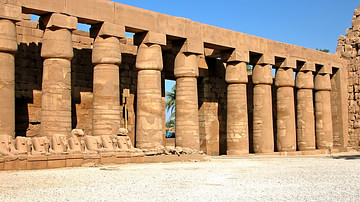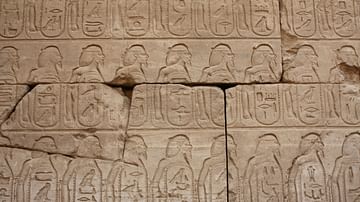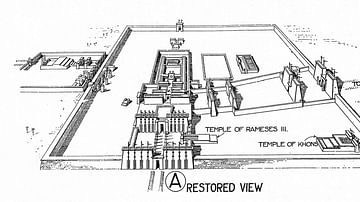Illustration
Statue of Tutankhamun, from the temple of Amun-Ra at Thebes, Karnak, Egypt, 18th Dynasty, c. 1336-1327 BCE.
The king presents an abundance of offerings, including lotus blossoms, bunches of grapes, pomegranates, and ducks hung by their feet. These are for his father "Amun-Ra", the god in whose temple the statue was placed. The facial features are Tutankhamun's, but the text on the back pillar attributes the statue to Horemheb, who usurped it after taking the throne and erased the memory of Tutankhamun and other rulers linked to the despised Amarna Period.
The British Museum, London.
About the Author
Cite This Work
APA Style
Amin, O. S. M. (2016, July 18). Statue of Tutankhamun. World History Encyclopedia. Retrieved from https://www.worldhistory.org/image/5327/statue-of-tutankhamun/
Chicago Style
Amin, Osama Shukir Muhammed. "Statue of Tutankhamun." World History Encyclopedia. Last modified July 18, 2016. https://www.worldhistory.org/image/5327/statue-of-tutankhamun/.
MLA Style
Amin, Osama Shukir Muhammed. "Statue of Tutankhamun." World History Encyclopedia. World History Encyclopedia, 18 Jul 2016, https://www.worldhistory.org/image/5327/statue-of-tutankhamun/. Web. 28 Apr 2025.








